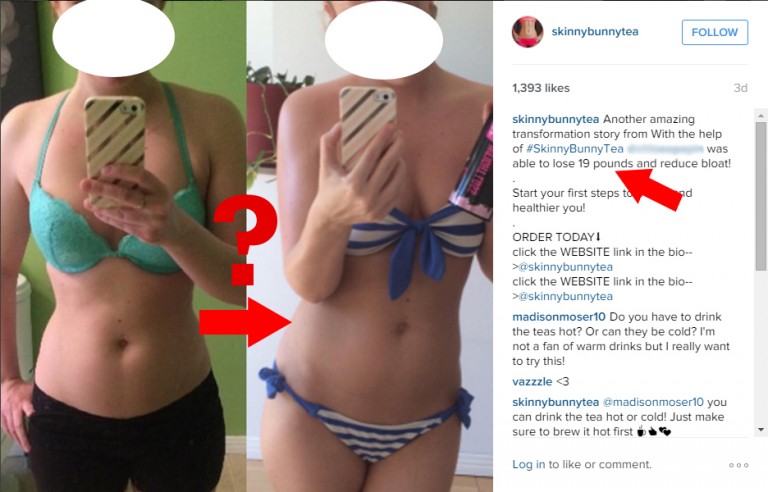The “dream body” is an illusion that you and I will never achieve.
This represents an abstract idea.
Abstract will never be reached because it’s not quantifiable.
Let’s be real. Speaking about discipline and minor, gradual changes isn’t as sexy nor marketable as “achieve your dream body in 28 days”. That’s just the way it is and will continue to be.
Why is that?
The quick fix illusion.
We are lazy.
Deciding to commit to something new and make adjustments over a long period takes time and effort. Being handed something on a silver platter with the promise of wondrous results in a very short time frame takes less time and effort and therefore seems like the logical decision to make.
This line of thinking is how the gym/fitness supplements industry is able to generate billions of dollars each year from our wallets. For example, the “complementary medicines” industry in Australia alone is predicted to reach $4.6 billion in revenue by 2017-18.
Are our bodies reaching a breaking point, necessitating the consumption of these medicines? Or are we simply becoming more susceptible to being sold products we don’t need.
For instance, consider variants of this “skinny tea” that’s being peddled online, particularly on Instagram.
Many popular ’grammers are paid to promote products, and don’t even have to try them.
I like and use the products, but I don’t have to try them or offer any health advice. It makes me question other reviews. – Jane*, 26, fitness model
Containing senna, these teas are nothing more than a glorified laxative marketed at impressionable, vulnerable women who want nothing more in life than to acquire a slender figure.
By using the hashtag #SkinnyAmbassador on their transformation photos, these tea sellers are single handedly contributing to the “skinny is better” mindset that we’re attempting to move away from, particularly in the world of French fashion. It’s also achievable in under a month if you buy the “28 DAY WEIGHT LOSS & DETOX PLAN”.
Actually, excuse my naïvety… apparently men market these products too.
Finding quality before and after photos that showcase tangible results is also more difficult than not.
Lighting and angles are extremely easy to manipulate, spawning testimonials which distort how much benefit these products are actually bringing.
Let’s use an example.
The woman pictured allegedly lost 19lbs with some help from Skinny Bunny Tea. If this is indeed true, well done to her as this is not an easy feat. Unfortunately, I was unable to look at this individual’s page (private) to verify if she herself was objectively claiming the weight loss or if it was a fictitious number invented by the poster.
Looking at this photo in more detail, I had a difficult time differentiating between the before and after photos. I’m going to assume the right is the after photo simply due to the product placement (which isn’t even fully contained within the shot).
Some observations about the transformation:
- Lighting discrepancy. The left photo casts a shadow over her abdomen area, giving the illusion of a “fuller” look. The right photo shows a darker, uniform lighting over the same area, obscuring some detail.
- Angle discrepancy. She’s facing directly towards the camera in the first shot, but her torso is leaning away from the camera in the second shot. An object will appear smaller the farther it is away from the camera. Photography 101.
- Hand placement. Her hand is on her hip in the first shot, showing a perfectly healthy hip curvature. This same curvature is obscured by her elbow in the second shot, giving the illusion of a more slender, “straighter” figure. This also makes it difficult to determine how much body fat around her midsection was actually lost.
- No objective measure of time between photos. Was this after a month of time? three months of time? or did this woman simply change her clothes and hold up a product 5 minutes later.
I’m explicitly pointing this out to raise your awareness when considering these products. Popular YouTuber Furious Pete made a video about this four years ago, demonstrating what can be achieved within only 5 hours and later advertised as a body transformation.
The power of advertising.
We’re visual creatures that take shortcuts in our decision-making process of whether a product is beneficial and should be considered, or if it doesn’t interest us and should be ignored.
Simply place an attractive person, authority figure or celebrity in front of a product and watch sales explode.
We will subconsciously sabotage ourselves, believing that by taking supplement x or purchasing product y, we’ll miraculously transform into the “shredded” man, attractive near-naked woman in yoga pants or suave business person presented to us.
This is the secret weapon of the astute advertiser and it holds true in almost every industry wanting a customer to make a purchase.
Dan Fleyshman, the youngest CEO of a publicly traded company was able to generate $1.2 million in sales and half a dozen retail and distribution deals within a month of founding his Uwheels company.
How?
He sent his product to social media influences and celebrities for free; adopting a “product for promotion” strategy.
These influencers would later post about their new toy, plastering it in front of hundreds of thousands of eyes all around the world. And that’s even before the snowballing effect takes place, where followers would tag one or more friends especially if there was a chance they could win the product through a giveaway.
The effectiveness of this approach is mind-boggling because we all invest a level of trust into revered people which makes us more likely to act when we’re being sold to.
Ask yourselves the following questions:
Would you buy a TAG Heuer watch being advertised by a disheveled homeless person instead of Leonardo DiCaprio, Brad Pitt or Cameron Diaz?
Would you hire a personal trainer who is overweight and struggles to walk up a flight of stairs?
Of course you wouldn’t because image sells.
Minimizing uncertainty is paramount to the sale – the tiniest seed of doubt in a potential customer’s mind is the difference between a purchase and a lost client.
Reprogramming your mind.
If someone claims a dream body can be achieved through using some product, service for an incredibly short time (28 days!) it’s probably a hollow promise that’s being marketed to you in an effort to sell something.
I want you to look at it this way:
A Dream Body = A body that can be practically achieved and maintained over time.
Embed this into your mind, make the adjustment, and open your eyes.
There will be effort and work involved, which holds true for anything worth achieving, particularly any form of self-improvement.
Looking deeper:
Practicality implies quantifiability -> progress can be objectively tracked.
Maintainability implies sustainability -> progress can be made over a long period.
Again, these statements are not as sexy as “achieve your dream body for summer!” but the likelihood of lifelong success is magnitudes higher.
Don’t be suckered in to the dream body hype by purchasing a myriad of supplements with the hopes of overnight results and prompt success. Strip away the hyperbole, question everything and continue to make the correct decisions for yourself in the long term.



